by Nancy Kilpatrick and Hugues Leblanc
Palermo is an ancient city located at the north-west corner of Sicily, an enormous island south of Italy's mainland off the tip of the 'boot'. Populated with the descendants of Mediterranean stock, largely farmers, recent excavations indicate human activity on the island go as far back as the Paleolithic and Mesolithic periods. Palermo itself was founded by Phoenicians then passed to the Carthaginians, and by 354 BC was a Roman free town. Cut off from the mainland, the island has over time developed a unique style, and modern residents hang onto their traditions. Nowhere is this more evident than at the Capuchin Cemetery and Catacombs.
The cemetery and catacombs are part of a large complex which also houses the Capuchin Monastery, built in 1533. In 1623, the church that is part of the complex was remodeled, and restored again in the early 1900s. It contains works by sculptor Ignazio Marabiti, and is famous for its manuscript collection. Today, housing and heavy traffic surround a complex that was once on the outskirts of town. An open-air food market faces the parking lot.
The Capuchin Cemetery came about because of a new and populous order of monks. The Capuchins separated from the Franciscans in 1525 in an effort to return to a more fundamental interpretation of St. Francis' edict to help the poor and the helpless. The bearded Capuchins wear sandals with no socks, and a brown rope-belted robe with a hood. It is the hood, the capuce, from which the name of the order derives. Capuccino coffee is named after the color of the monks' robes. As deaths in this new order occurred, the need arose for a spacious cemetery, appropriate to their needs.
High concrete walls enclose the cemetery proper, with niches sculpted here and there along the inner wall. Immediately inside the entrance stands a large tree, the branches pruned to form the shape of a cross. Strolling the wide tree-lined pathways in Palermo's hot, dry climate, the brilliant southern sun accentuates the pastels of the graves, crypts and monuments. This is a well-cared-for final resting place, neat and clean, with ornate iron fencing, graves awash with flowers, monuments and statuary, potted plants everywhere, and altars within crypts decorated with memento mori.
One unusual element is the prevalence of upright marble plaques positioned atop graves onto which prayers or poems have been etched. Restoration is an ongoing process in this land where the departed are still members of the family.
The overall design of the grounds is square. The tallest crypts run along the periphery, with the more heavily decorated mausoleums of cremation remains (ossarios) located farthest from the monastery, in the modern section. A fair number of visitors arrive throughout the day, and a monk keeps watch from the roof of the monastery.
The style of the cemetery is a cross between the simple peasant graves of Mexico, and the ornate and elaborate artistic crypts of Paris. But Italy has its own style. Italians are family oriented, and most graves are decorated with small oval black and white, or pastel-tinted pictures of the deceased, some as old as the late 1800s. Catholicism is another major influence, and the interior walls of more than one crypt come alive with religious paintings.
Perhaps the most famous of the interred is Giuseppe Tommasi, Prince of Lampedusa, buried in 1957. He authored one of Sicily's important and well-known works of literature, The Leopard.
The outside cemetery cannot be separated from the underground crypt, the entrance to which is part of the continuing cemetery wall that leads to the church. The crypt is large, with 20 foot high vaulted ceilings, and houses an unusual post-mortem display. Through a bizarre twist of fate, when Capuchin Brother Silvestro from Gubbio died in 1599 his body was, for some unknown reason, placed in a well.
Within the year his remains had mummified, the result of the tufaceous soil in the region. Soon, other monks wanted to be mummified upon their death. Bodies were placed in cells called 'strainers', dug into the subsoil in the crypt beneath the church. It took approximately eight months for the flesh to dry.
Mummification became fashionable for non-religious Palermo residents, so much so that the crypt now houses the mummified remains of nearly 1,000 citizens. They are displayed standing, sitting, lying in open coffins, in life-like poses. The crypt is divided into sections: priests; professionals; women-with a special display of virgins, identified as such by the metal headbands they wear. Nearly all are dressed in the finery of their day. The impression of volume beneath the clothing the mummies wear is created by a generous stuffing of straw.
Perhaps the most interesting and poignant section belongs to the children. They range in age from newborns to five or six years old, wearing christening outfits, or their first long pants, sitting in chairs together, or lying in coffins alone. In general, their features were better preserved, perhaps because babies and young children have more body fat than adults.
During World War Two bombs destroyed parts of the cemetery and much of the catacombs displays, and as well, the crypt suffered a fire in 1966. Some of the majolica floor tiles remain in remarkably good condition, and traces of decorative paintings on a few walls have survived. The Capuchin Cemetery and Crypt has become a huge tourist attraction and due to thefts in the past, the mummies are now protected by a six foot high wire-mesh fence.
In 1871 Brother Riccardo from Palermo was one of the last monks mummified and buried in the catacombs. Mummification was outlawed in 1881, although in the 1920s special permission granted one last body admittance to the catacombs. Two year old Rosalia Lombardo was embalmed by Dr. Solafia of Palermo, who took the secret of the chemical brew he concocted to his grave. Her amazingly well- preserved body is still on display.
Source: www.hiddenmysteries.org/weird/palermo/palermo.html
Versione Italiana:
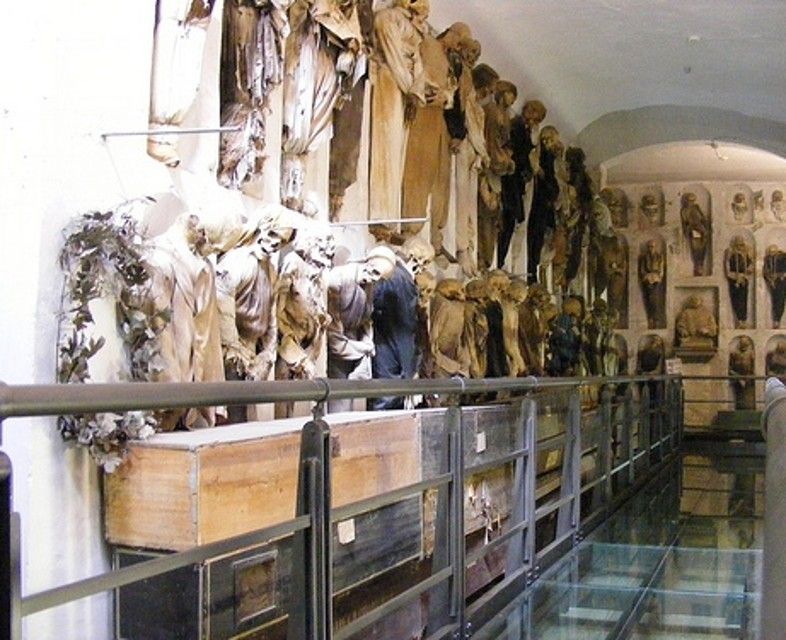
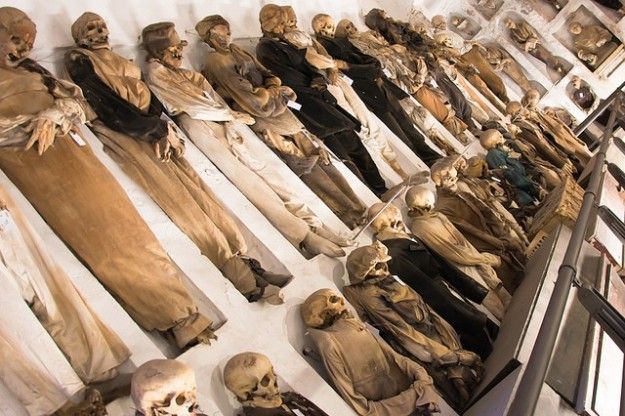
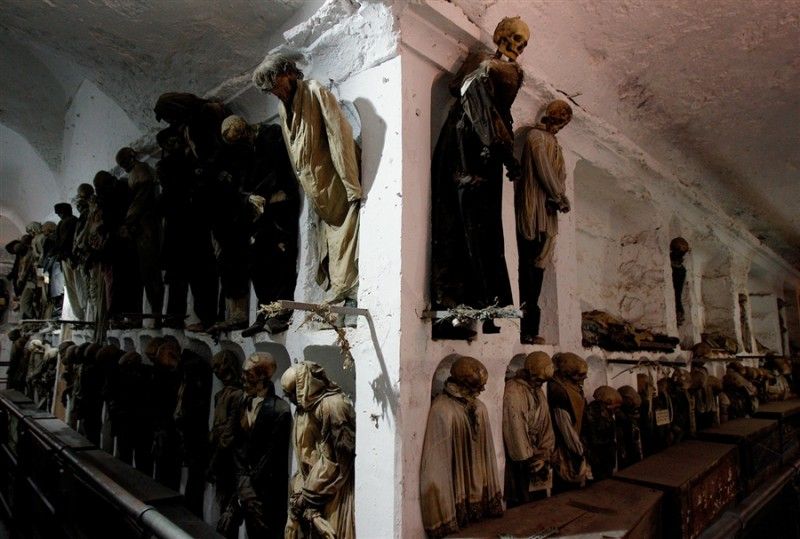



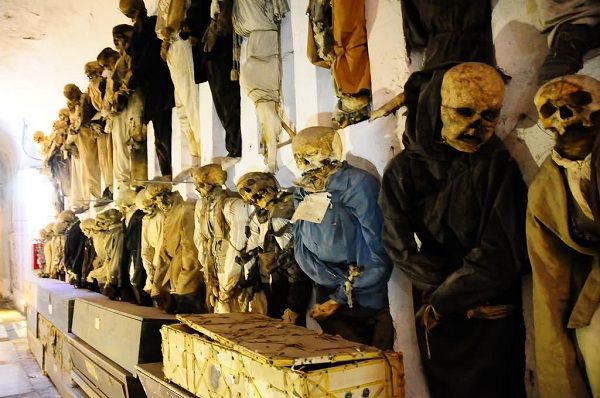
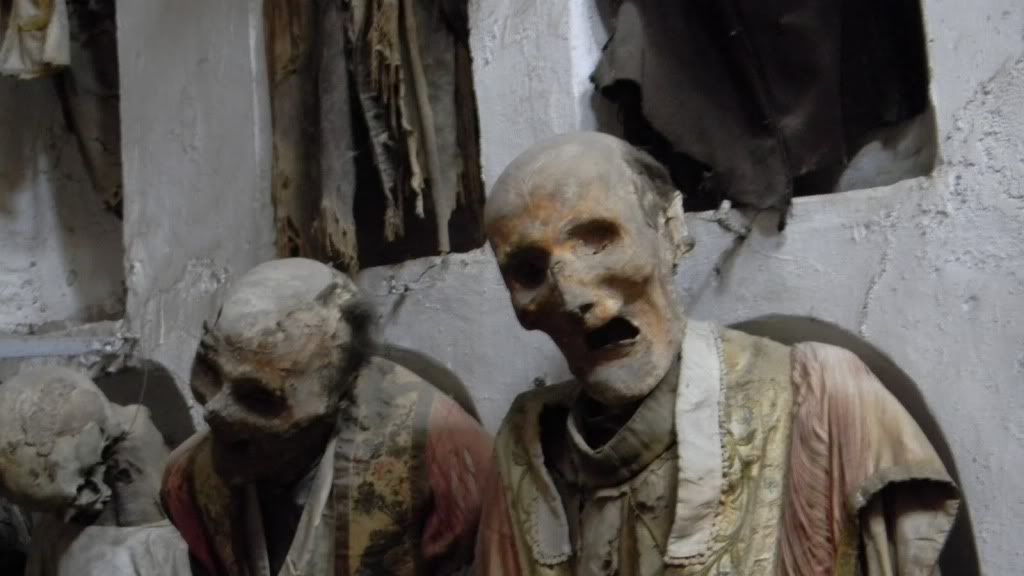


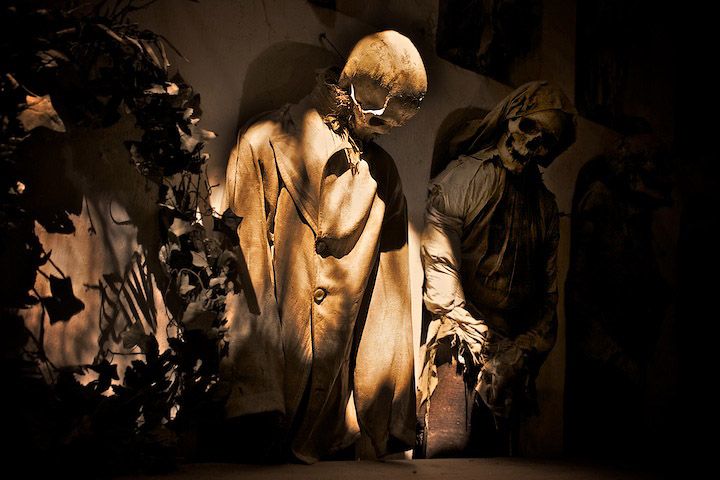
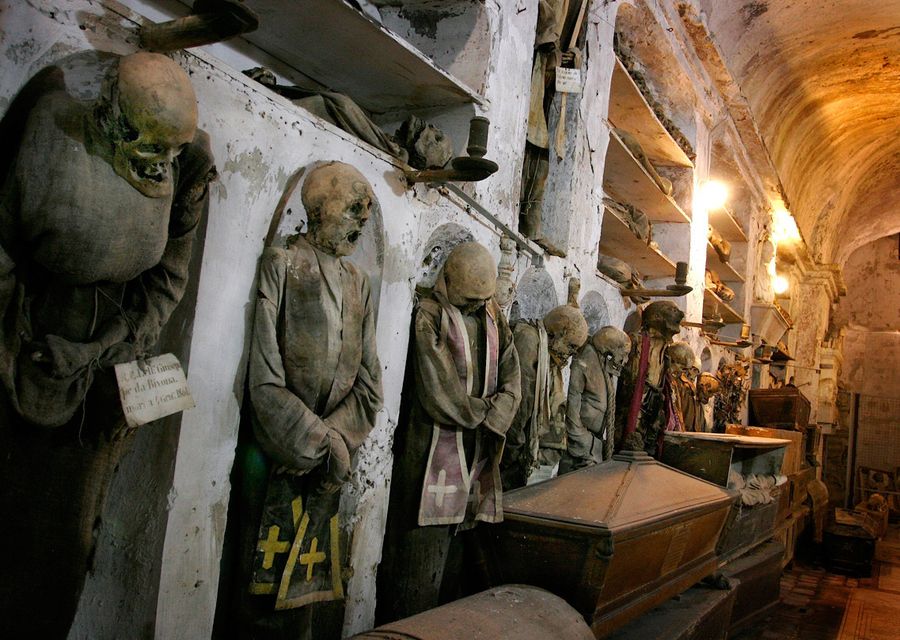
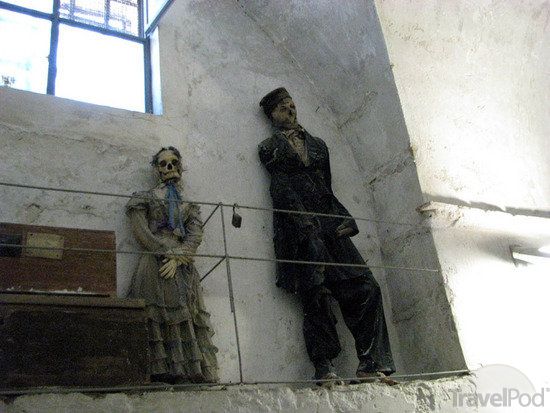
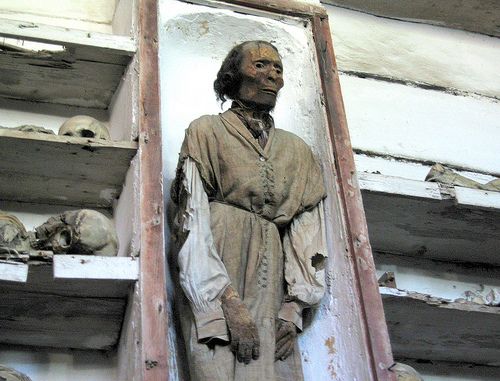
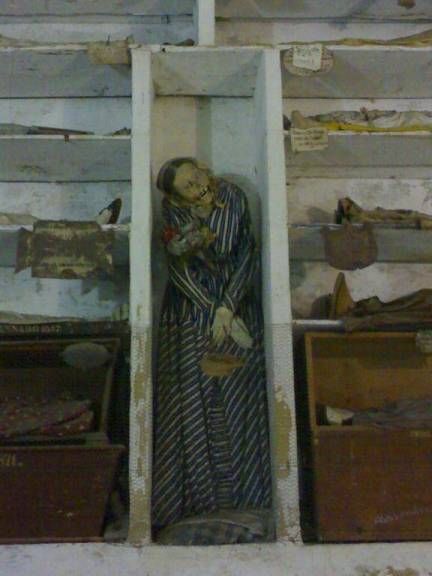
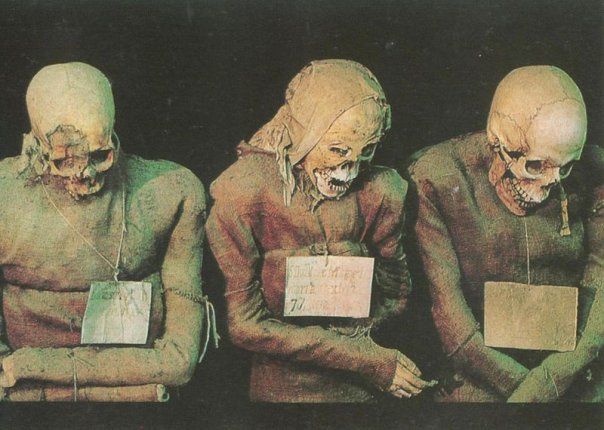
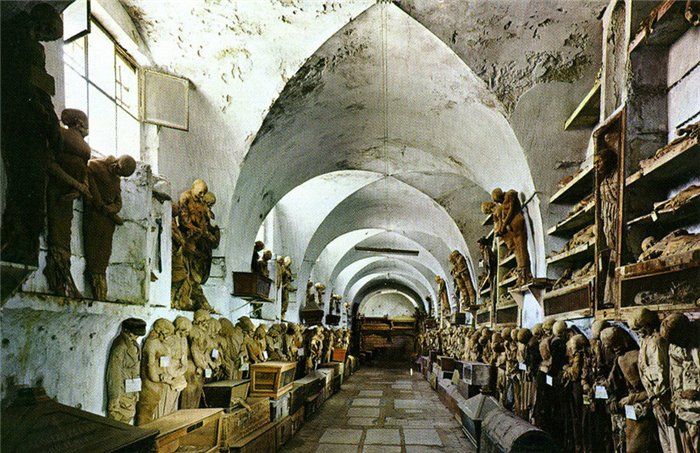
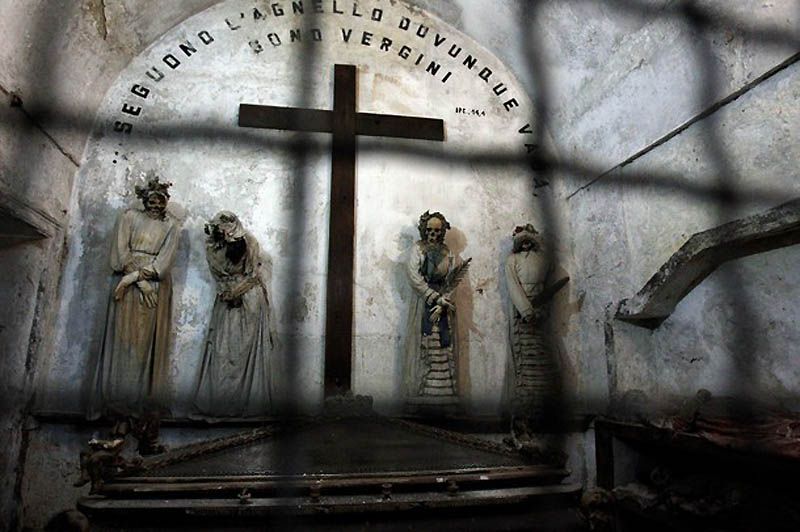
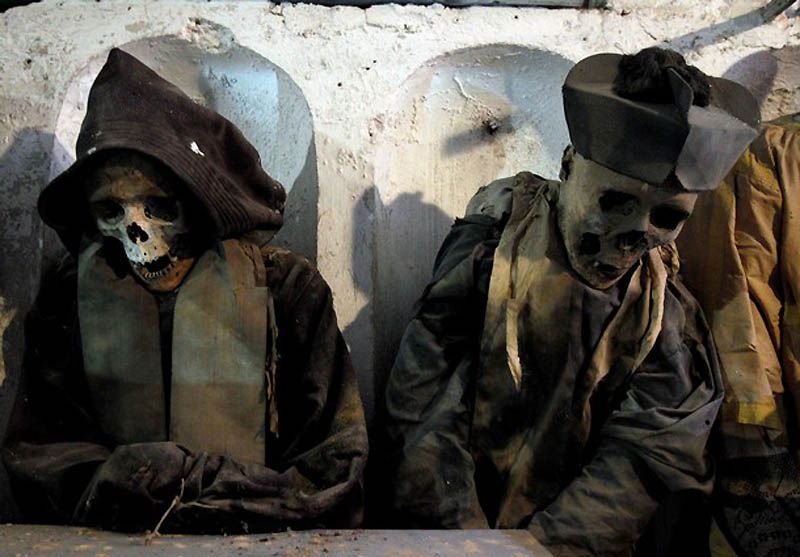
No comments:
Post a Comment